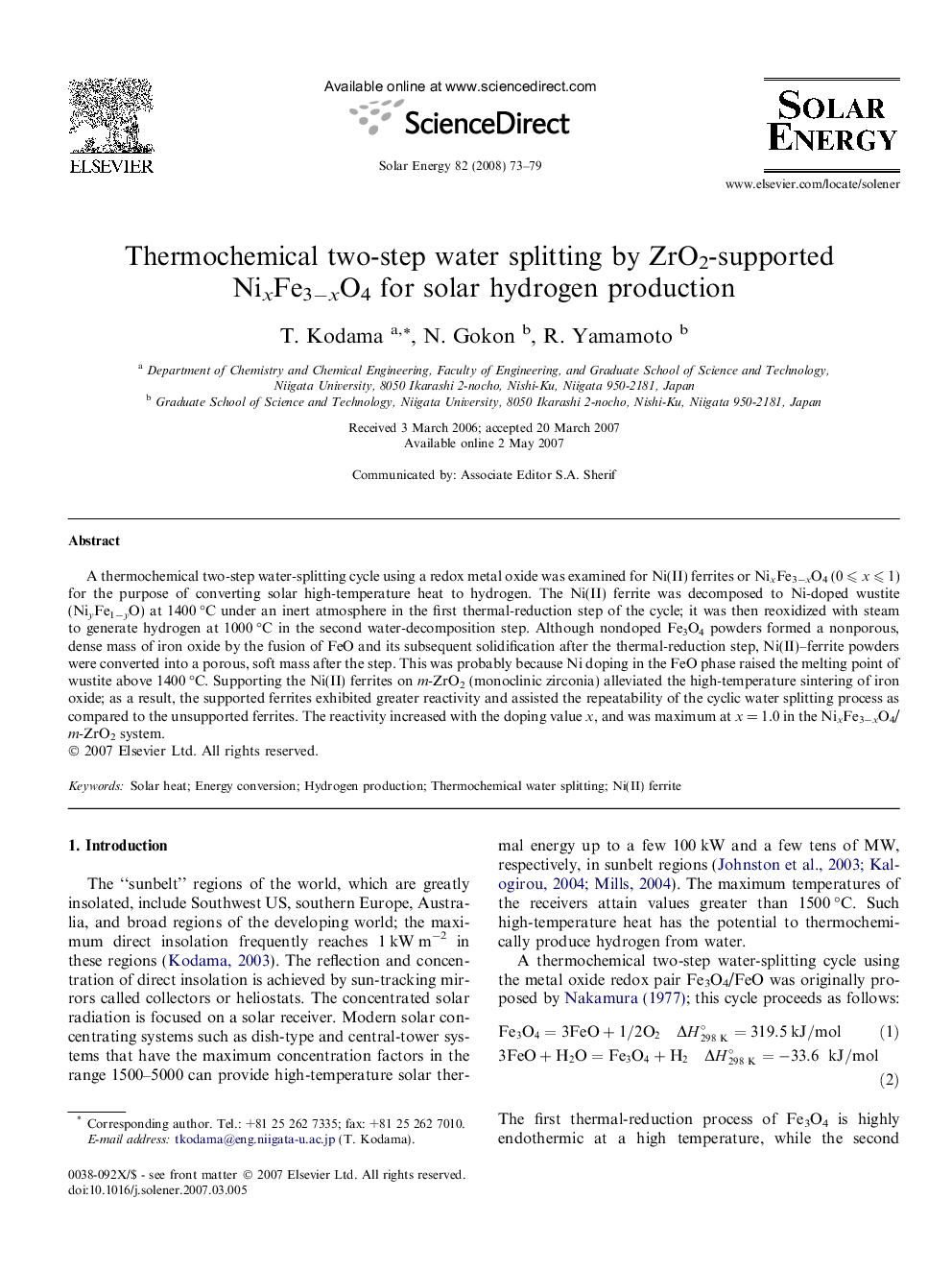| Article ID | Journal | Published Year | Pages | File Type |
|---|---|---|---|---|
| 1551587 | Solar Energy | 2008 | 7 Pages |
A thermochemical two-step water-splitting cycle using a redox metal oxide was examined for Ni(II) ferrites or NixFe3−xO4 (0 ⩽ x ⩽ 1) for the purpose of converting solar high-temperature heat to hydrogen. The Ni(II) ferrite was decomposed to Ni-doped wustite (NiyFe1−yO) at 1400 °C under an inert atmosphere in the first thermal-reduction step of the cycle; it was then reoxidized with steam to generate hydrogen at 1000 °C in the second water-decomposition step. Although nondoped Fe3O4 powders formed a nonporous, dense mass of iron oxide by the fusion of FeO and its subsequent solidification after the thermal-reduction step, Ni(II)–ferrite powders were converted into a porous, soft mass after the step. This was probably because Ni doping in the FeO phase raised the melting point of wustite above 1400 °C. Supporting the Ni(II) ferrites on m-ZrO2 (monoclinic zirconia) alleviated the high-temperature sintering of iron oxide; as a result, the supported ferrites exhibited greater reactivity and assisted the repeatability of the cyclic water splitting process as compared to the unsupported ferrites. The reactivity increased with the doping value x, and was maximum at x = 1.0 in the NixFe3−xO4/m-ZrO2 system.
